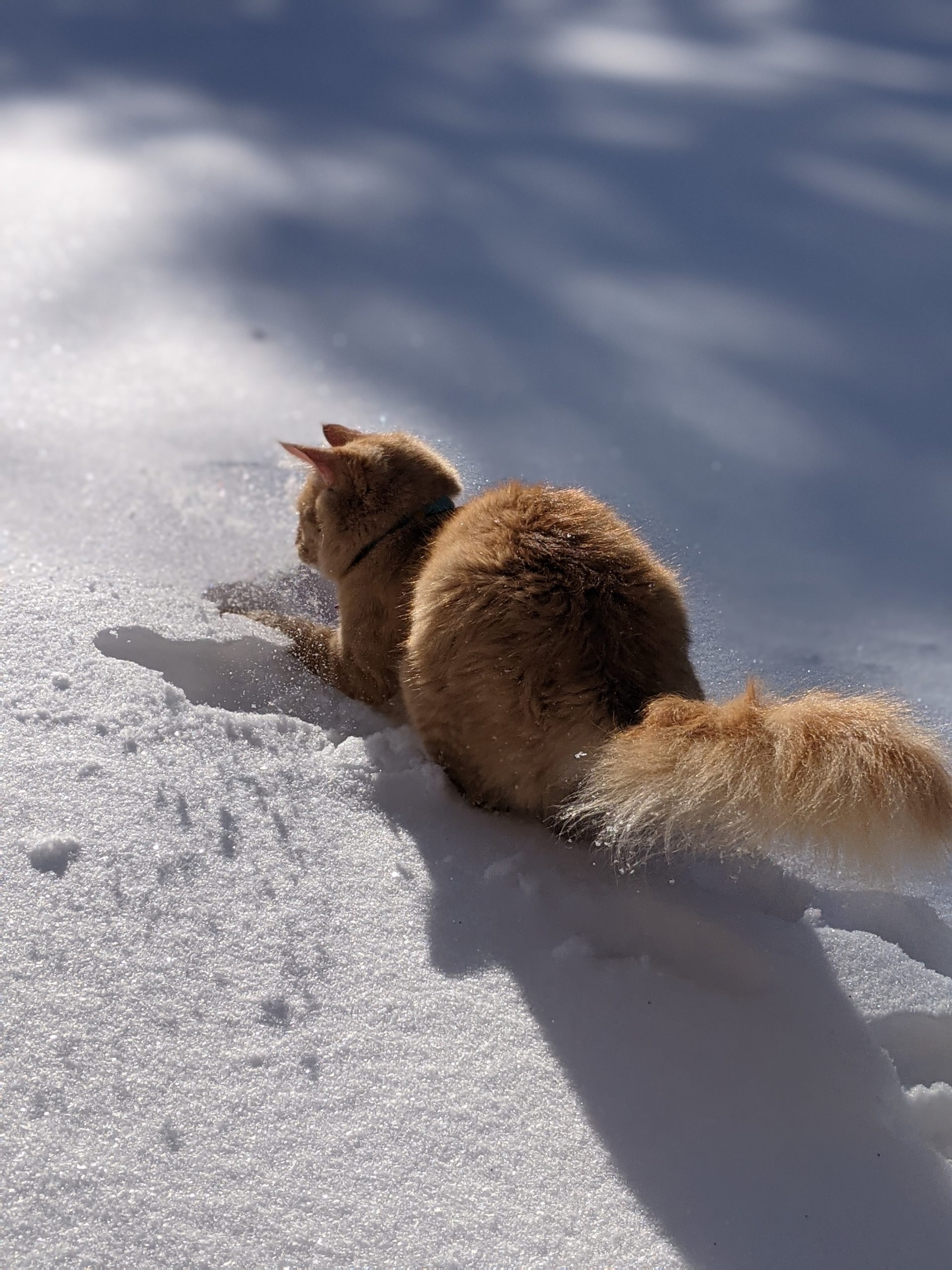2 min read
Franklin enjoys the snow last winter. No need to outfit your dog in booties in the backyard. It’s likely you’ll only be playing for a short while, and there are no chemicals there. Read the tips below if you’re walking your dog for a long time in public spaces.
We’re in the heart of winter, Denver. And while we wait for some snow to arrive, prepare now so you can enjoy the cold weather with your pet.
Despite their fur coat, pets are susceptible to cold and snow. Just like people, they can quickly succumb to frostbite, hypothermia, and other winter-related conditions.
Apply these 3 tips to your wintertime routine. They’ll help protect your four-legged friend from the dangers of cold and snow.
#1: Gear up for outdoor walks with your pet
-Although you may not want to head outside, your dog needs plenty of exercise in the winter, even on days when the temperatures are freezing.
-Keep your furry pal safe from icy conditions by bundling them up in a waterproof pet jacket and pet booties. These accessories will protect them from ice, snow, freezing rain, and chemicals. Properly fitted footwear prevents cuts, frostbite, and chemical contact. Your pet may take time to accept that he or she has to wear booties. Take short walks on the sidewalk for a few days before heading out on longer adventures.
–Dry your pet well when you return home. Remove all traces of snow, ice, and ice-melting chemicals from their fur.
Nestle takes a walk in her winter gear. Leash your pets if you have frozen ponds, lakes, or rivers nearby. Pets can break through the ice and succumb to hypothermia. Don’t try an ice rescue by yourself. Leave that to trained professionals!
#2: Ensure your pet’s bed is far from chilly drafts
-Cold breezes can waft into your home through opened doors, poorly insulated areas, or drafty windows. If your pet’s bed is usually next to a door or window, move it to a warmer location, especially for senior pets with achy joints.
–Caution: don’t place their bed near a fireplace or heater. Your pet can overheat or get burned if they venture too close.
 Cats can also enjoy the snow. Two tips: 1) Supervise cats who are learning to like the snow. Stay alert since stressed cats will head for a hiding place (and can get lost). 2) Be prepared for snow-loving cats to go out and not return for a while. Depending on the weather, this can also be stressful for cat owners. Monitor conditions before your cat goes out to explore nature.
Cats can also enjoy the snow. Two tips: 1) Supervise cats who are learning to like the snow. Stay alert since stressed cats will head for a hiding place (and can get lost). 2) Be prepared for snow-loving cats to go out and not return for a while. Depending on the weather, this can also be stressful for cat owners. Monitor conditions before your cat goes out to explore nature.
#3: Keep antifreeze and ice melt out of your pet’s reach
–Caution: antifreeze and ice melt are poisonous. Pets can easily get into mischief with household chemicals that are not properly stored or used. Antifreeze and sidewalk salt can be tempting for them to lick.
-Rather than using ethylene glycol, switch to propylene glycol for your car. It’s a pet-friendly ice-melt. Ethylene glycol is harmful and can be fatal if ingested. It has a sweet taste and pets may be tempted if they come across it. Our recommendation: avoid storing both of these chemicals in your garage if you have kids and pets.
If you have other questions, or if you find your furry pal in a cold-weather mishap, give us a call. We are here for you 24/7.
